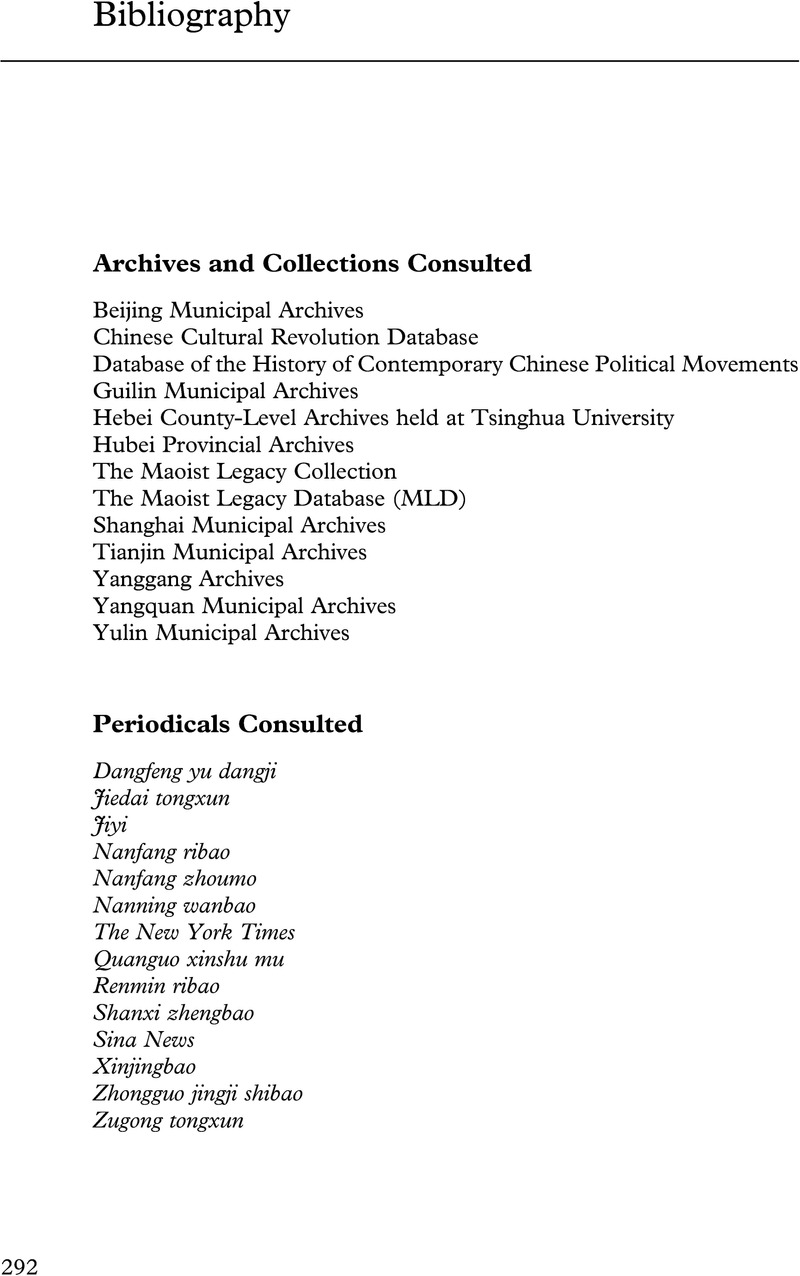Bibliography
Published online by Cambridge University Press: 31 August 2023
Summary

Information
- Type
- Chapter
- Information
- Justice After MaoThe Politics of Historical Truth in the People's Republic of China, pp. 292 - 312Publisher: Cambridge University PressPrint publication year: 2023
